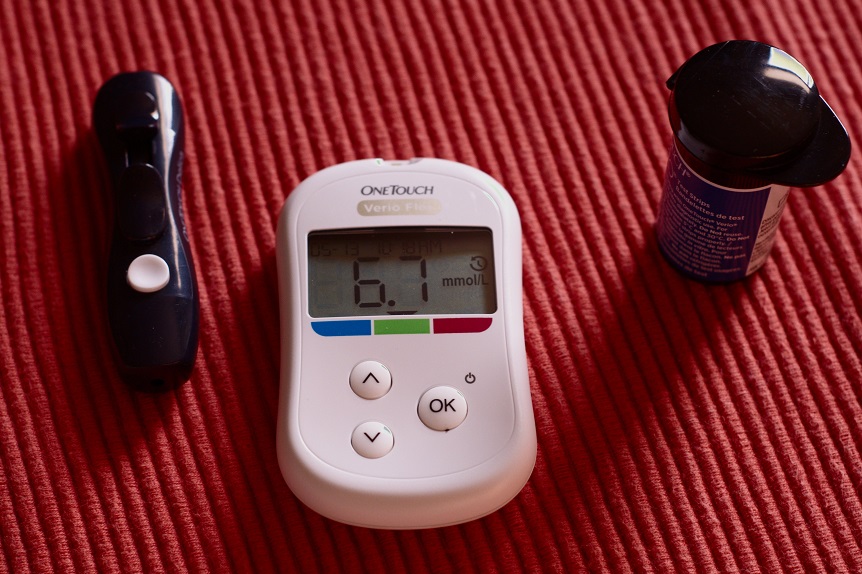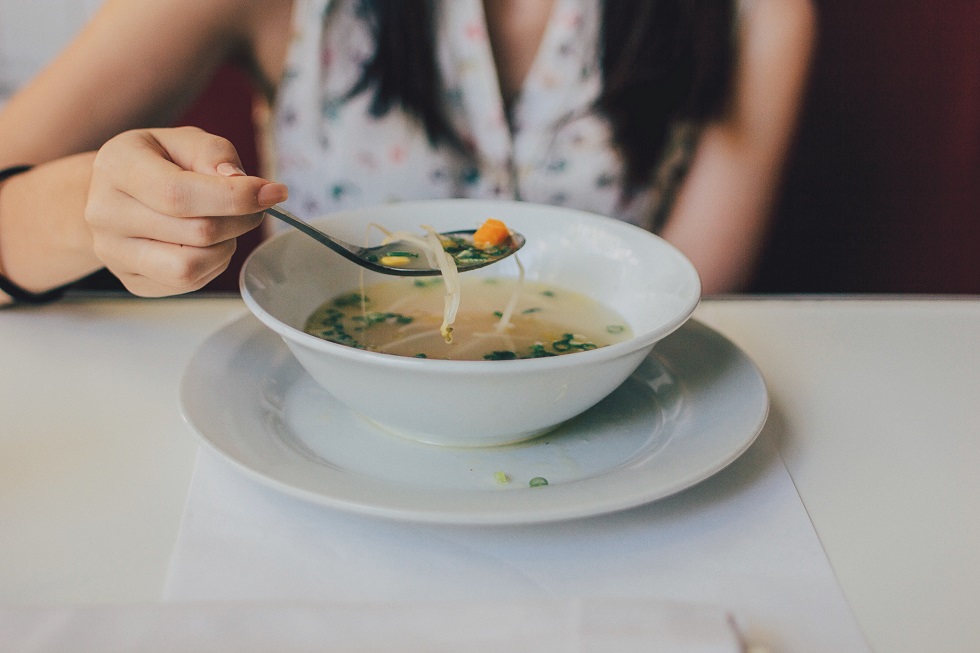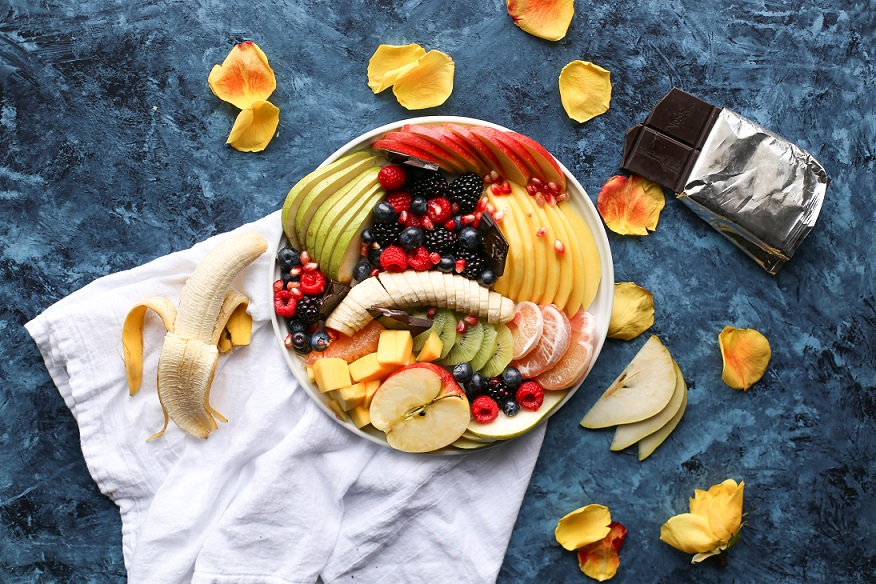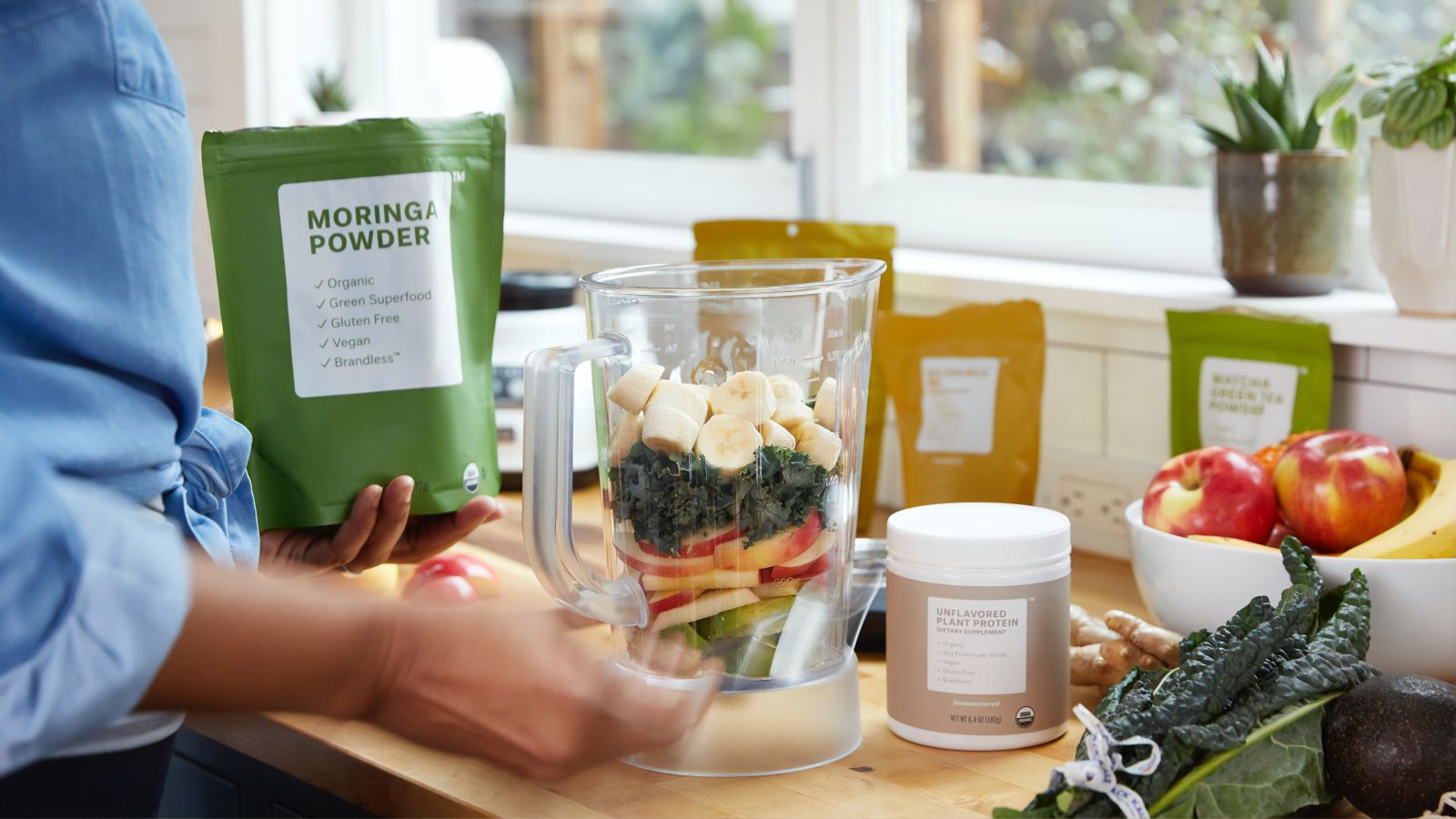Before choosing a suitable weight loss program, you should know that a diet must be fairly easy to follow, well-balanced, safe, efficient for weight loss, and protective against diabetes, heart diseases, and similar issues. In the following, the top 10 diets of 2019 are listed based on the mentioned factors.
6. Mayo Clinic Diet
Weight loss and a healthier lifestyle are possible on the Mayo Clinic Diet. You would reconsider your eating habits, break bad ones, and replace them with good ones with the help of the unique food pyramid provided.
"The Mayo Clinic Diabetes Diet" was first published in 2013. Then, in early 2017, a new edition of this book was released. This eating plan is designed for people suffering from prediabetes and Type 2 diabetes. It is particularly helpful for lowering blood sugar and keeping its level stable.
Nutrients
The newest edition of the "Mayo Clinic Diet" which was published in 2017, teaches you to work your way through two parts: "Lose it!" and "Live it!"
- In "Lose it!" you'll have a healthy breakfast, lots of fruits and veggies, whole grains, and healthy fats. You'll have to stop snacking (except on fruits and veggies), sugar (except what's found in fruit), consuming too much meat, full-fat dairy, and eating out (unless the food you order follows the rules).
- In "Live it!" you'll go on what you learned in phase one but are allowed to break the rules occasionally. You'll also count the number of calories you can consume while still losing a couple of pounds weekly.
Is it efficient in losing weight?
According to the Centers for Disease Control and Prevention, diets rich in low-energy-dense foods have been helpful in weight loss and promoting fullness on fewer calories.

Is it easy to follow?
- Most dieters will find the limited "Lose it!" phase difficult; that's why it only lasts two weeks. Once you move your plan to "Live it!" and find no food off-limits, you'll be more likely to stay on this diet.
- Although in "Lose it!" phase eating out is banned, as long as you consider Mayo's food pyramid, you can enjoy it. Alcohol should be limited a little more than your preference.
- There are no timesavers, unless you have somebody to plan, shop, and prepare your meals. The bad news is you can't hire someone to exercise for you.
- You shouldn't feel hungry on this diet.
How much exercise is needed?
You should have exercise at least 30 to 60 minutes daily; what and when you do it is up to you. Mayo Clinic offers pointers to have more physical activity in your daily life for overcoming common physical limitations.
7. Volumetrics Diet
Volumetrics is more of an approach to eating rather than a structured diet. You'll get used to decipher the food's energy density, cut the energy density of your meals, and make choices that fight hunger.
Nutrients
On Volumetrics Diet, you should go for foods high in water. They play the leading role in Volumetrics since water increases the weight of food without packing in additional calories. Your best choices include:
- Pasta (65% water)
- Veggies and Fruits (80 to 95% water)
- Soup (with 80 to 95% water)
- Yogurt (75% water)
You're also allowed to eat foods similar to what you're craving: crunchy carrots and hummus, say, rather than chips and dip. Food is divided into four groups:
- Category one (very low-density) includes vegetables and non-starchy fruits, broth-based soup, and non-fat milk.
- Category two (low-density) consists of veggies and starchy fruits, grains, breakfast, low-fat meat, cereal, legumes, and low-fat mixed dishes like chili and spaghetti.
- Category three (medium-density) includes meat, pizza, cheese, salad dressing, french fries, bread, ice cream, pretzels, and cake.
- Category four (high-density) consists of crackers, chocolate, chip candies, cookies, nuts, butter, and oil.
Is it efficient in losing weight?
You will lose weight by following the Volumetrics plan. In general, diets rich in low-energy-dense foods promote fullness on fewer calories and cause weight loss, according to the Centers for Disease Control and Prevention.

Is it easy to follow?
The focus is on making smart, sustainable points for your eating habits to lower the total caloric density of your diet. Since Volumetrics doesn't ban or severely limit entire food groups, your chances of sticking with it are higher.
- Eating out is free by the Volumetrics approach. You'll have to determine which menu is the best option. Starting with a low-calorie food makes you less likely to scarf your entire entree.
- There are no timesavers, unless you have somebody to plan, shop, and prepare your meals. The bad news is you can't hire someone to exercise for you.
- You shouldn't feel hungry on this diet.
- There's no need to worry about taste. You don't have to avoid your favorites with Volumetrics; it's only about making smart swaps.
How much exercise is needed?
Volumetrics is primarily an eating plan, but walking for 30 minutes on most days of the week is recommended. Try to increase your steps daily getting off the bus a couple stops early or strolling to a colleague's office rather than sending an email or by parking farther away from the mall.
8. TLC Diet
The TLC (Therapeutic Lifestyle Changes) diet was introduced by the National Institute of Health's National Cholesterol Education Program with the target of cutting cholesterol as part of a heart-healthy eating habit. It suggests eating plenty of veggies, cereals and pasta, fruits, bread, and lean meats.
Nutrients
You can start the TLC diet by setting your target calorie level. If what you only want is lowering LDL, the bad cholesterol, the goal is 2,500 calories daily for men and 1,800 for women.
- On the TLC diet, you should eat lots of fruits, whole grains, vegetables, low-fat or non-fat dairy products, skin-off poultry, and fish. Here are some points to help you get started:
- Keep consumption of meat to a minimum, and stick to fish, turkey, and skinless chicken.
- Consume non-fat or low-fat dairy two to three servings a day.
- Rely on eating fruits and vegetables; up to four servings of fruit and three to five servings of vegetables.
- Consume 11 servings of bread, pasta, rice, cereal, or other grains every day.
Is it efficient in losing weight?
Since it was designed to reduce cholesterol levels, It's unclear whether the TLC diet will help you lose weight or not. However, surveys suggest that, in general, low-fat diets tend to promote weight loss. According to NIH, if you lose 10 pounds, your LDL will be decreased by 5 to 8%, a double-bonus for your efforts.

Is it easy to follow?
- The TLC diet isn't convenient because it takes work and a particular aptitude for reading nutrition labels.
- Eating out on the TLC diet is free, although it takes some effort. You'll have to consider menu choices, which are the lowest in saturated cholesterol and fat.
- You shouldn't feel hungry on this diet. You can eat lots of veggies and fiber-packed fruits.
- If you like greasy food or sweets, the TLC diet may not be a good option for you. However, you can add a little spice and lemon to some foods like the chicken breast to make them more delicious. For dessert, low-fat sorbet, non-fat frozen yogurt, and frozen pops are all in-bounds.
How much exercise is needed?
Moderate-intensity exercise like brisk walking is necessary for this program at least 30 minutes daily. Having physical activities lowers the risk of heart disease and diabetes, helps keep weight off, and increases your energy level.
9. Nordic Diet
The Nordic diet was designed to revolutionize Nordic cuisine and improve public health specifically. It incorporates aspects of Scandinavian culture and tradition on seasonal locally sourced foods, combined with concern for protecting the environment. On this diet, whole food back-to-nature approach is an attractive option for many people trying to eat in a healthier way, said Kristin Kirkpatrick, lead dietitian and manager of Wellness Nutrition Services at the Cleveland Clinic Wellness Institute.
Nutrients
- Although you don't count calories on the Nordic diet, you'll have to calculate the carb-protein ratio of your meals.
- For carbohydrates, begin by getting familiar with low-GI foods. Most vegetables and fruits other than potatoes have a low glycemic index. Lower-fat dairy products are suggested.
- Protein-rich foods will help keep you satiated. In the Nordic diet, fish such as legumes, shellfish, and beans or lentils are excellent protein choices for vegetarians and meat-eaters alike.
- Afternoon or Midmorning snacks are excellent. You could have a combination of low-GI toast or crispbread with a slight splurge of dark chocolate spread, or munch on nuts or fresh fruit.
- You'll cook food at home and pack them as much as possible. You can use salad bars if you favor fresh veggies over pasta salads and potato; choose low-GI sides like chickpeas and focus on lean protein. Don't forget to have water with every meal.
Is it efficient in losing weight?
You'll lose weight in a slow, steady way on this diet.
A June 2016 survey in the Journal of Proteome Research compared the New Nordic Diet to an average Danish diet (including more meat, more processed foods, more fat, fewer plant foods, and less fiber). Researchers tracked weight and measured a variety of biomarkers in blood samples from 145 participants for 26 weeks. Those individuals consuming the Nordic diet were more likely to lose weight.
Another research carried out in 2014 was published by The American Journal of Clinical Nutrition. It was shown that among 147 adults with larger waistlines who followed either the Nordic or average Danish diet for six months, those people eating the Nordic diet lost weight and had reduced blood pressure.

Is it easy to follow?
- If you are a fan of eating out with the Nordic diet, you can find possible options by searching for farm-to-table restaurants online.
- The Nordic diet can be time-consuming, so it might not be convenient if you are short in time. "You have to spend at least an hour every evening for making dinner. It's just not in line with the way modern consumers eat", says Arun Micheelsen, a Danish food researcher.
- You shouldn't feel hungry on this diet because you are permitted to eat lots of veggies and fiber-packed fruits. On the Nordic diet, eating protein-rich foods with every meal helps you feel full quickly.
- Taste is an essential factor in the Nordic diet.
How much exercise is needed?
The diet does not include specific exercise guidelines. However, it was based on dietary suggestions from the Danish Health Authority, which advises adults to have physical activities at least 30 minutes daily. Some exercise suggestions on attaining a flatter stomach are provided in "The Nordic Way."
10. Ornish Diet
The Ornish Diet was introduced in 1977 by Dr. Dean Ornish (clinical professor of medicine at the University of California, San Francisco, and founder of the nonprofit Preventive Medicine Research Institute in nearby Sausalito). It was to help people "gain health, feel better, live longer, and lose weight". The diet is low in fat, animal protein, and refined carbohydrates. It also focuses on exercise, stress management, and relationships.
Nutrients
You can enjoy the Ornish Diet if you want a modest weight loss or general health boost, but if you're going to reverse heart disease, you'll have to get more serious. Either way, these tips are provided:
- Use whole-grain options like whole-grain bread or Quinoa spaghetti rather than refined carbohydrates like white bread and pasta.
- Many animal products and processed foods should be limited to avoid saturated fat.
- Eating a lot of fruits and vegetables is suggested.
- Use low-fat or non-fat dairy rather than full-fat ones.
- Meditation or another stress-management technique is recommended in your routine life.
Is it efficient in losing weight?
In research carried out in 2015 and published by the journal Cell Metabolism, it was concluded that reducing fat could lead to a 67% greater weight loss than reducing carbohydrates among obese people. This study, which included 19 individuals, was strictly controlled and lasted six days.
A study conducted in 2010 was published in the American Journal of Health Promotion. The results showed that about 1,300 individuals consuming the Ornish plan who wanted to reverse heart disease could reduce their body mass index by almost 8%, from 32 (obese) to 29 1/2 (overweight) after a year.
In another research published in the New England Journal of Medicine in 2009, 811 overweight adults were asked to eat diets rich in a variety of nutrients. After two years, the groups assigned to get 20% of their calories from fat, had lost about the same as those individuals who consumed a diet that was 40% based on fat.

Is it easy to follow?
- If you're taking the spectrum approach, in which you allow to make decisions based on your tastes, priorities, and level of commitment, it's pretty easy.
- If you're aiming to reverse heart disease, the program is more limited and, therefore, can be tougher to follow.
- The Ornish Diet is convenient. Recipes are abundant, and alcohol is allowed in moderation; no more than one drink a day for women, two a day for men.
- Eating out should be controlled on the Ornish Diet. Just try to find restaurants that will cater to special requests.
- Some meal kits and prepackaged foods could be consumed in Ornish-diet for timesaving.
- You shouldn't feel hungry on this diet because you can eat lots of veggies and fiber-packed fruits.
- Taste is an essential factor in the Ornish Diet.
How much exercise is needed?
Exercise is strongly suggested on the Ornish Diet. You should exercise to achieve your goals, such as controlling diabetes, weight loss, or reversing heart disease. A mix of strength, aerobic, and flexibility activities can be done.
.jpg)